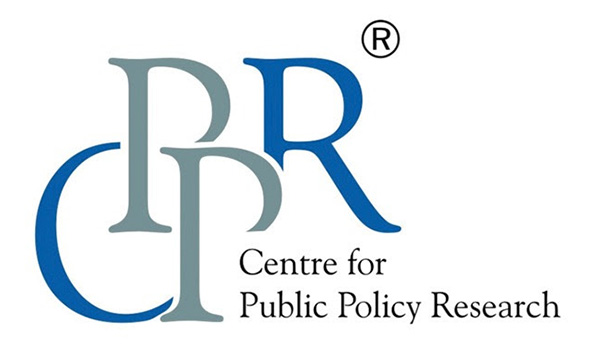CPPR in the News

The Fight for Uttar Pradesh West
April 11, 2019
Who will end up having the upper hand in Bihar?
April 13, 2019A constitutional aspiration
CPPR Chairman Dr D Dhanuraj comments in a news story published in the Deccan Herald on the issue related to water crisis in the country is yet to find a headway in the elections.

In a way, an election to the Lok Sabha is the people’s dialogue with the country’s Constitution. With their experience in personal, social and political life, the citizens interact with the fundamental law and the institutions created by it, by expressing their choice and priorities. In the process, they are called upon to choose not only who will govern them but also the ideology that they want to prevail over them.
Conservation of natural habitats is a constitutional ideology. Articles 48A and 51A (g) of the Constitution indicate the country’s aspiration to create and maintain an environmental welfare state.
But the tall talk in the air does not tally with the harsh reality on the ground. Natural resources perish inexorably, and contamination of foundational ecosystems has escalated to fatal levels.
David Wallace’s The Uninhabitable Earth is a serious work that tells us about the bleak future of the planet. It discusses topics ranging from wildres to the oceans facing death. It also gives a glimpse of the political aspects of the environmental crisis. Every environmental issue is essentially political. Since both ecology and politics deal with the citizen’s control over resources, no political party or government can ever ignore the compelling issues concerning the earth. In a recent speech, Justice Dhananjaya Chandrachud spoke about the ‘environmental rule of law’ and hinted that the health of the environment is part and parcel of a person’s right to life.
India goes to polls in the coming days. The election manifestos have started to hog the limelight. The Congress manifesto, which is relatively fecund in content and imaginative in its concerns, focuses on environment and climate change (Chapter 49 of the manifesto). Among other things, it says, “air pollution is a national public health emergency”. The State of Global Air (SOGA) 2019 report, released a few days ago, says that air pollution has been the cause of 1.2 million deaths in India and it ranks third among the causes of death in the country. The report acknowledges that the present government has initiated certain programmes to tackle the issue. But, as anyone would concede, the efforts have been far from satisfactory. Even the national mission for clean Ganga was a failure.
New Delhi is a dying city. The last winter conveyed alarm signals across the country’s capital. In The Great Smog of India, Siddharth Singh shows that “India’s air pollution crisis is eating even our own fundamental right to life”. He shows how the “air quality issue is an inequality issue” and puts forward his idea that “intelligent action against air pollution would be pro-economy and pro-growth.”
The fact of the matter is, almost all the major cities in North India are more or less polluted to unbearable limits. Cities like Kolkata in the East and Bengaluru in the South are on the wrong side of development. The question is, however, whether it is a concern for our political leaders and voters. A report by the Clean Air Collective in India has recently made a shocking revelation — that 90% of people living in the severely polluted cities are unaware of the causes and impacts of air pollution.
D Dhanuraj at the Centre for Public Policy Research (CPPR) recently lamented that the water crisis in the country is “yet to find a headway in the elections”. Relying on the World Bank report, he says that “India is one among the world’s water-stressed countries, with the availability of water per person fallen almost 400% in the last 60 years”. He added that “600 million Indians are going to face acute water shortage in the coming decade and 21 cities are under severe stress and on the threshold of shutting down in a few years’ time”. The water crisis directly contributed to the agrarian crisis, which, of course, has had various other reasons as well.
Mere sanitation scheme
Several years ago, Robert Edwards and Rachel Kellett came up with their emblematic work Life in Plastic that deals with the adverse effects of plastic in India. We have numerous research activities carried out in the country dealing with various ecological issues. But when it comes to policy, we have a Swachh Bharat Abhiyan, which essentially is only a sanitation scheme but had nothing to do with urban waste management or poverty alleviation in slums. Landll sites across the country illustrate the asco of Swachh Bharat. But no one, including the opposition, is keen to expose it.
The Indian judiciary has evolved the principles of inter-generational equity and public trust, polluter’s liability, precautionary doctrine, etc. The apex court has dealt with almost all facets of ecology, from forest conservation to river pollution. A new brand of public interest litigation, by expanding the concept of locus (right to initiate legal action), was judicially inaugurated in the Indian Council for Enviro-legal Action’s case (1996). ‘Green Benches’ were a novel juridical innovation in the Vellore Citizens’ Welfare Forum Case (1996). For conservation of forests, the court issued repeated directions in the Godavarman Thirumulpad case.
But the courts cannot, generally and ideally, make policies for the nation. As Alexander Hamilton put it, aer referring to Montesquieu, the judiciary is the weakest of the three departments of power. Ecological wisdom has to prevail over the policymakers and the people at large. The battles for survival need to be fought by people across the world. The elections in modern democracies are, therefore, occasions for dialogue with Mother Nature as well. Like secularism and socialism, environmentalism also is India’s constitutional aspiration.
*This news story can be also read at Deccan Herald

